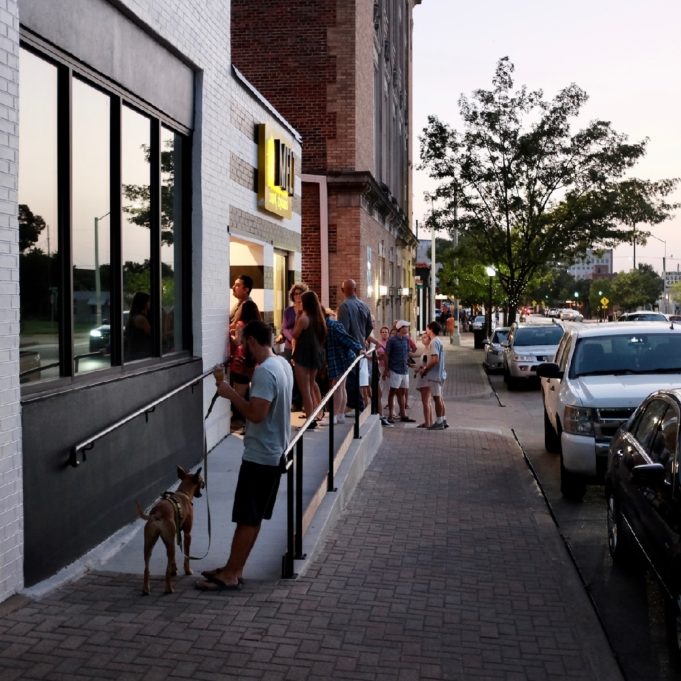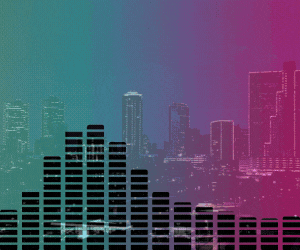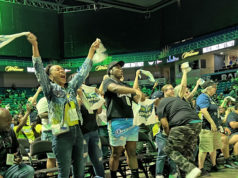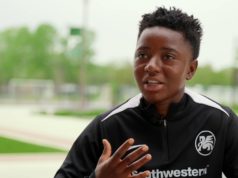The sidewalk is the element of public space that every pedestrian interacts with in their day-to-day life. It’s a space that was once the foundation of public life in American cities before it was whittled away to an afterthought all over the country by ever-widening roadways and speeding traffic –– if it was even included in a street at all. After decades of neglect, the pro-urbanism revival of the last decade has brought new attention to this neglected part of American city life, and planners have been rediscovering what makes a great sidewalk.
Fort Worth has a lot of very bad sidewalks. All over the city (especially away from the immediate area around downtown) are skinny, treeless stretches of concrete situated next to six-lane mini-freeways, barren paths nestled between speeding SUVs and huge parking lots, places where no human being ever voluntarily wants to be. These are places created to tick off some kind of checkbox on a traffic engineer’s to-do list or a marketing form in a big-box developer’s brochure. They are not places for people. Not really.
Happily, Fort Worth does have some good sidewalks as well, and we even have some genuinely great ones. I thought it might be helpful to dissect what goes into a great sidewalk, to show how so many of them go so wrong.
The photo here shows a typical sidewalk on Magnolia Avenue in the Near Southside, though these aren’t the only good sidewalks in town. They’re just a good, clear illustration of the elements of great design. The first thing one might notice about this sidewalk is that it’s wide. It seems obvious, but giving people plenty of room to pass each other as they walk, and to simply gather and be in a public space, tends to encourage them to use that public space.
So, a great sidewalk has room for people. Once you give them space, you need to give them reasons to be in that space. The simplest way to do that is to put useful buildings along that sidewalk. Vacant spaces and parking lots do not attract people; instead, they repel them. Putting parking in the back, out of the way, and lining the street with buildings right up on the sidewalk, with large windows and sidewalk-oriented doors, makes people feel welcome. It also has the added bonus of making the street safer by ensuring there are always eyes on the street (this goes double for mixed-use buildings that may have residences upstairs above the shops and offices).
It’s also important to make people feel protected and comfortable on the sidewalk. Since in 99% of cases there are cars driving past on the street, providing physical and psychological buffers between pedestrians and traffic is key to encouraging pedestrian activity. Trees are a great way to do this – not only do they provide that physical and psychological barrier from traffic, they also have the added benefit of creating shade and oxygen. It’s important, though, that the trees be located along the curb, between pedestrians and the street, to serve this multi-use role. Cars themselves, in the form of on-street parking, can also serve as a useful barrier. On-street bike lanes (especially ones buffered further from traffic) further move the traffic away from people.
On a sidewalk that’s spacious, inviting, and surrounded by friendly buildings and buffered from traffic, the effect is one of creating an “outdoor room,” a place people enjoy spending time in. (This is further enhanced when the street itself is narrow and buildings across the street are closer, but that’s a topic for another post.) To further enhance safety at intersections and make people feel like they’re a priority, “bulb-outs” – wide extensions of the sidewalk into the roadway that shorten crossing distances – ensure that drivers move more slowly and people have less open pavement to cross.
The sidewalk may not appear at first glance to be an especially complex piece of design, but creating great sidewalks – and, in turn, great public spaces – involves a host of design elements that play off each other and contribute to making a place better than its individual parts may suggest. Our streets and sidewalks are the most prevalent form of public space in American cities, and it pays off to spend the time and effort to make them places that attract human beings.












